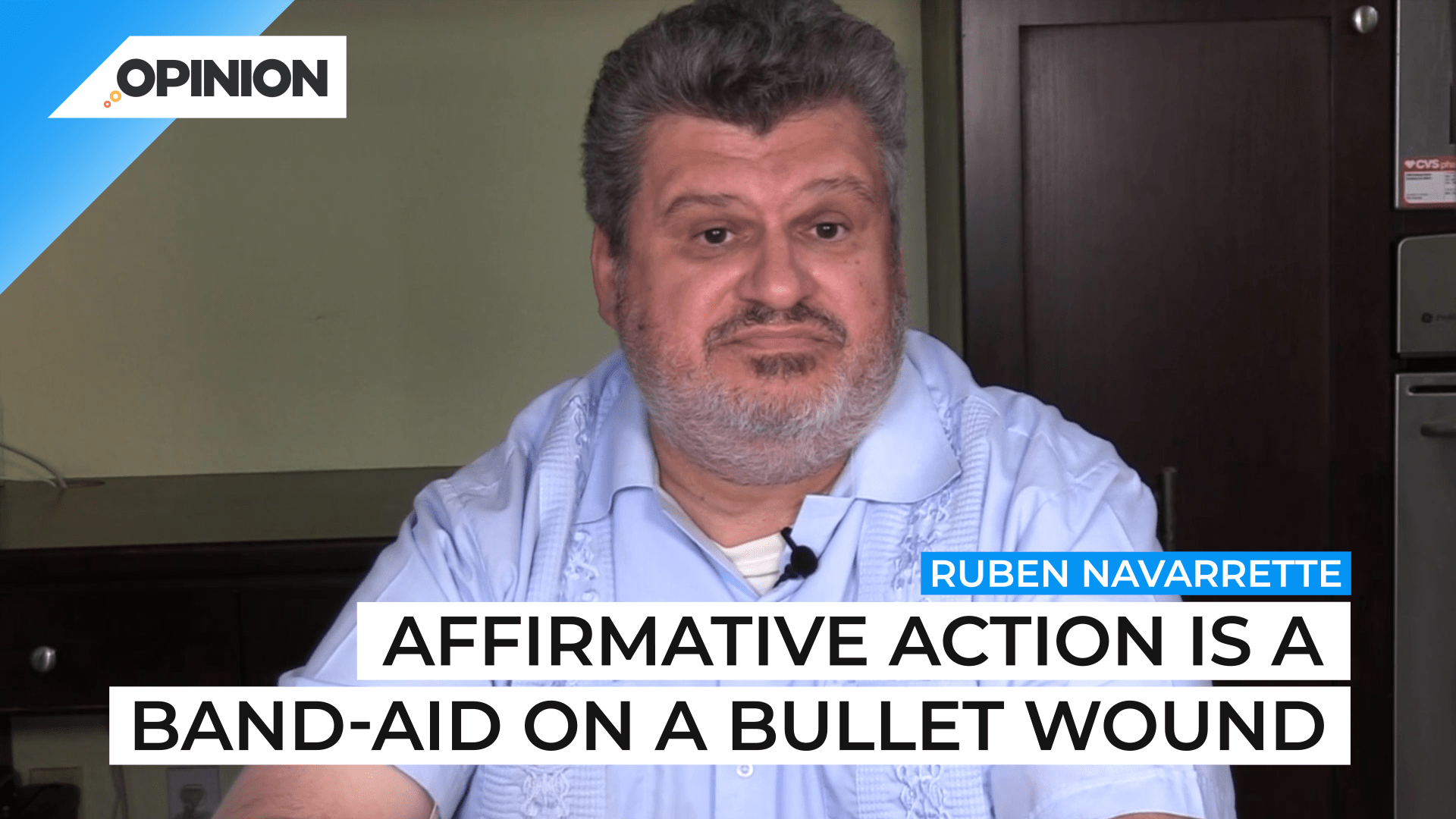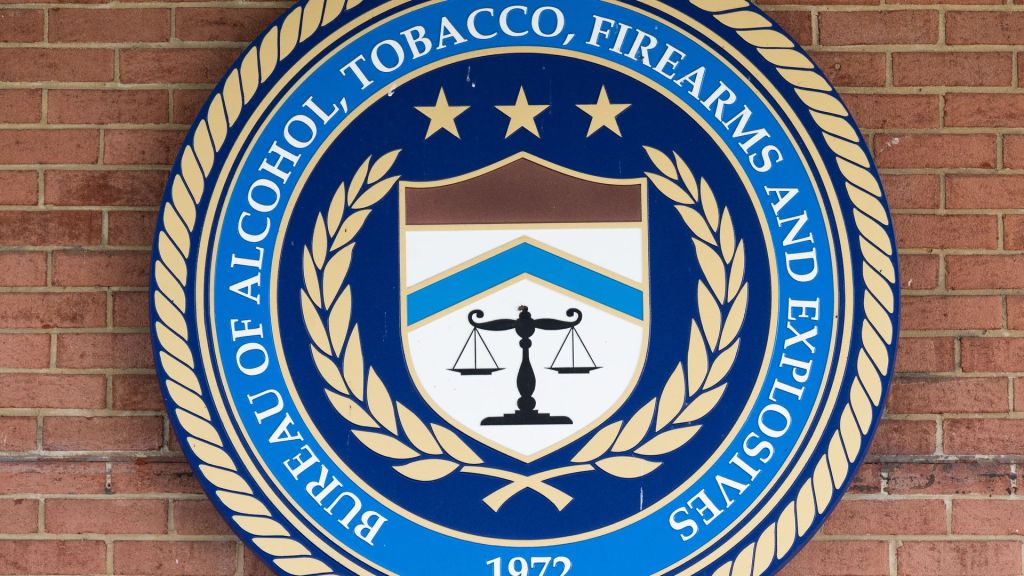
Commentary
-
Our commentary partners will help you reach your own conclusions on complex topics.
New Rule. White men are not allowed to talk about affirmative action. Not ever, unless they know what the heck they’re talking about. Most don’t. But that doesn’t stop them, of course from spouting off about a topic that they don’t fully understand. In the nearly 40 years that I’ve discussed and written about preferential treatment of college admissions, as opposed to an employment or government contracts, I’ve heard white men spin some fantastical yarns.
Affirmative action is not “reverse discrimination” as they claim. Nor is it part of some massive conspiracy to oppress white men. Affirmative action does not amount to admitting people to college based on race or ethnicity alone. And nor is a kind of cosmic bureaucratic payback for past sins.
Expect to hear more madness in the weeks and months to come. The Supreme Court recently heard arguments in the case, Students for Fair Admissions v. President and Fellows of Harvard College. Plaintiffs accused Harvard of discriminating against Asians. Rubbish. Asians made up 25.9% of the Harvard class admitted in 2021.
White conservatives such as radio host Hugh Hewitt, say Harvard wants to “limit the upward mobility of Asian Americans via the imposition of caps on their admission.” More rubbish. Harvard is a private institution. It’s allowed to make decisions on what it wants its student body to look like. If it decides it doesn’t want a student body that’s 70% Asian, or 70% Latino or 70% Black, for that matter, that’s fair enough. That’s its right.
Two lower federal courts have already ruled in Harvard’s favor, and the amicus briefs submitted on the university’s behalf, included one from the Asian American Legal Defense and Education Fund. It rejects the idea that affirmative action hurts Asians and claims that race-neutral admissions “ultimately benefits white applicants.”
Let’s back up a beat and define affirmative action…that I should describe my personal history with the concept. Affirmative action is more than 60 years old. It was on March 6, 1961, that President John F. Kennedy signed Executive Order 10925. It required that U.S. government contractors take “affirmative action to ensure that applicants are employed, and that employees are treated during employment without regard to their race, creed, color, or national origin.”
Americans have argued about the concept ever since. Three times over the last six decades, the Supreme Court has given colleges and universities permission to take the race ethnicity of applicants into account, as long as it’s just one factor among many in the admissions process.
In 1978, in Regents of the University of California v. Bakke, the justices struck down a quota at UC-Davis Medical School, but said race could be considered. In 2003, in Grutter v. Bollinger, the Court upheld the admissions policy at the University of Michigan Law School. In 2016 in Fisher v. University of Texas, the justices decided it was okay for UT-Austin to consider race and mission.
My own personal relationship with affirmative action goes back to the fall of 1984, when I was a 17-year-old high school senior. As a Mexican-American with perfect grades and advanced placement courses, I was accepted by five elite universities, including Harvard, which I would eventually attend. This inspired white friends whose grades weren’t as good as mine, to tell me that I would not have been admitted had I not been Mexican.
For a long time I stood by affirmative action, maybe out of loyalty, but over the last 20 years, not so much. Gradually, I’ve become convinced that when applied to0 aggressively, a program that was intended to benefit Latinos and African-Americans can actually hurt them. It labels beneficiaries as unqualified, lowers academic standards, and masks the failures of the K-12 public schools to properly educate black and brown students.
Get it straight. Affirmative action is not an attack on whites and Asians. It’s a band-aid on a bullet wound. It’s time to pull off the bandage and heal the patient, once and for all.
-
With President Trump, learn to take the good with the bad
President Donald Trump’s second term has already been defined by sharp polarization, with Democrats warning of a constitutional crisis and the destruction of vital federal programs even as Republicans celebrate progress on key initiatives like ending DEI nationwide. Amidst the division, those voters who find themselves agreeing with some of Trump’s actions while disagreeing with… -
Trump’s tariff leverage stems from Mexico’s fears at home
President Donald Trump’s proposed 25% tariffs on Mexico have been delayed by a month after Mexican President Claudia Sheinbaum agreed to deploy an additional 10,000 National Guard members to the U.S.-Mexico border to “prevent the trafficking of drugs, particularly fentanyl.” Trump said, however, that Mexico’s efforts to stop illegal drugs were not enough to keep… -
Trump’s crackdown on migrants shows his tyranny
In final months of the Biden administration, migrant crossings over the U.S.-Mexico border had reached their lowest levels since 2020. However, President Donald Trump pledged to make cracking down on immigration a key issue in his second term. He already enacted a range of new executive policies intended to ramp up arrests and deportations of… -
When it comes to skills, immigrants have the right stuff
As the Trump administration launches its nationwide immigration crackdown, questions persist about its impact on the American labor market. High-skilled workers are often viewed as more essential, but the low-skilled workers most affected by mass deportations also play critical roles in various U.S. employment sectors. While they may not drive innovation directly, low-skilled workers perform… -
How Republicans exploit LA fires for political gain
Amid one of the worst natural disasters in California’s history, some Republican leaders are using the Los Angeles fires to advocate for policy changes and to criticize Democratic leadership. House Speaker Mike Johnson has called for tying federal disaster aid to changes in how California manages its water and forests. President Donald Trump has blamed…
Latest Opinions
-
 Getty Images
Getty Images
DOE to investigate Maine Education Department over trans athletes, Title IX
-
 Reuters
Reuters
New coronavirus discovered in bats similar to COVID-19
-
 AP Images
AP Images
Pope Francis in critical condition with asthma-like respiratory crisis
-
 Getty Images
Getty Images
Knife attack in eastern French city claims one life, injures at least 2 others
-
 Getty Images
Getty Images
DOJ investigating UnitedHealth over Medicare Advantage billing: Report
Popular Opinions
-
In addition to the facts, we believe it’s vital to hear perspectives from all sides of the political spectrum.






